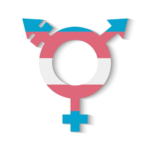Facial hair can be a source of frustration for many, particularly for women experiencing unwanted hair growth due to hormonal imbalances. While various solutions exist to manage this issue, estrogen has garnered attention as a potential player in the hair growth game. In this article, we’ll explore the relationship between estrogen and facial hair growth, examine how hormones interact in the body, and discuss both natural and medical interventions. So, let’s dive into the science of hormones and see if increasing estrogen levels can help reduce facial hair.
What is Estrogen and How Does It Work in the Body?
Estrogen is a key hormone in the human body, primarily associated with female reproductive health. It plays a significant role in regulating the menstrual cycle, influencing sexual development, and maintaining overall reproductive function. Produced mainly in the ovaries in women, estrogen exists in several forms, including estradiol, estrone, and estriol. This hormone also serves functions outside of the reproductive system, impacting bone density, skin health, and even emotional well-being.What Are Symptoms Of Low EstrogenSissy Build
In the context of hair growth, estrogen is thought to promote hair growth in areas where it is typically desired, such as the scalp, while potentially inhibiting it in areas where it is not, such as the face. The effectiveness of estrogen in regulating hair growth is largely due to its interaction with hair follicles, which can respond differently to varying hormone levels. Understanding how estrogen works is crucial before delving into its influence on facial hair.
The Role of Hormones in Facial Hair Growth Explained
Hormones are the body’s messengers, and they play a significant role in regulating various bodily functions, including hair growth. Facial hair growth in women is often attributed to an imbalance in androgens, such as testosterone. These hormones can stimulate hair follicles on the face, leading to increased hair growth, often manifesting as hirsutism. In contrast, estrogen tends to counteract the effects of androgens, potentially leading to less facial hair development.
The balance between estrogen and androgens is crucial for maintaining healthy hair growth patterns. When androgen levels are elevated, they can overpower the effects of estrogen, leading to unwanted facial hair. Conversely, higher estrogen levels may help create a more favorable environment for reduced facial hair growth. Understanding this hormonal balance can help individuals make informed decisions regarding their hair growth management strategies.
Can Increasing Estrogen Levels Reduce Facial Hair?
Increasing estrogen levels could potentially help reduce facial hair growth, particularly for those experiencing hirsutism due to androgen dominance. Some medical professionals argue that higher estrogen levels can counteract the effects of excess androgens, leading to a reduction in unwanted facial hair. However, the extent of this effect can vary from person to person, depending on individual hormonal profiles and underlying conditions.
While estrogen may play a role in mitigating facial hair growth, it’s essential to note that the relationship is not straightforward. Other factors, such as genetics and lifestyle, also contribute to hair growth patterns. Therefore, while increasing estrogen may have a positive impact for some individuals, it may not be a universal solution. It’s always a good idea to consult with a healthcare provider for personalized advice.
Estrogen and Androgens: A Balancing Act for Hair Growth
For effective hair growth regulation, a delicate balance between estrogen and androgens is essential. When androgen levels are higher than estrogen levels, the result can be the stimulation of hair follicles, leading to an increase in facial hair. This imbalance can be caused by various factors, including hormonal disorders like polycystic ovary syndrome (PCOS), stress, or certain medications.
On the flip side, a healthier balance leaning towards estrogen could mean a reduction in unwanted hair growth. Some studies suggest that increasing estrogen, whether through lifestyle changes, diet, or hormonal treatments, may help tip the scales in favor of estrogen, thereby reducing facial hair. However, it’s crucial to monitor and manage these hormone levels carefully, as excessive estrogen can lead to other health issues.
Natural Remedies to Boost Estrogen and Curb Hair Growth
If you’re looking for natural ways to increase estrogen levels and potentially reduce facial hair growth, several remedies might be worth exploring. Foods like soy products, flaxseeds, and legumes are rich in phytoestrogens, plant-based compounds that mimic estrogen and can help enhance your body’s estrogen levels. Including these foods in your diet may provide a gentle way to support hormonal balance.
Additionally, regular exercise and maintaining a healthy weight can also positively influence hormone levels. Stress management techniques such as yoga or meditation may help regulate cortisol levels, which, when elevated, can impact hormonal balance. While these natural remedies may not produce immediate results, they can support your overall hormonal health and well-being over time.
Hormonal Treatments: What Are Your Options?
If natural remedies fall short, hormonal treatments may be the next step. Medications such as birth control pills, which contain estrogen and progestin, are often prescribed to help regulate hormonal imbalances that contribute to excessive facial hair growth. These medications work by lowering androgen levels and can lead to a reduction in unwanted hair over time.
Another option includes anti-androgen medications like spironolactone, which specifically target androgen levels in the body. These treatments may be combined with estrogen therapy for optimal results, but it’s essential to work closely with a healthcare professional to find the right approach for your individual needs. Each treatment has its benefits and potential side effects, so a thorough discussion with your doctor can help you navigate your options.
Real-Life Experiences: Does Estrogen Make a Difference?
Many individuals who have struggled with unwanted facial hair have turned to estrogen therapies, whether through lifestyle changes or medical interventions. Users often report varying levels of success; some find that increasing estrogen significantly reduces facial hair growth, while others may see minimal changes. It’s important to remember that each person’s experience is unique, and factors such as age, hormonal health, and lifestyle can all play a role in the effectiveness of the treatment.
Real-life testimonials highlight the importance of patience and persistence in managing facial hair growth. Some individuals find that a combination of approaches—natural remedies, lifestyle adjustments, and hormonal treatments—yields the best results. The journey to managing facial hair is often multifaceted, and sharing experiences can provide valuable insights for those navigating similar challenges.
In summary, estrogen can play a significant role in facial hair growth, primarily by counteracting the effects of androgens. While increasing estrogen levels may help reduce unwanted facial hair for some, the relationship between hormones is complex and varies among individuals. Exploring natural remedies and hormonal treatments can offer options for those seeking relief. Ultimately, the best approach to managing facial hair growth will depend on personal circumstances, and working with a healthcare professional is key to finding effective solutions tailored to your needs. So, take heart—understanding your hormones is the first step toward feeling more confident in your own skin!


